Microsoft pushes out updates for Windows 10 from time to time. Among other things, security updates are necessary to ensure that a Windows system is not vulnerable to any security threat. But recently, there have been many reports about people encountering a specific error when they try to update the virus definitions for Windows Security, or when they try to install a pending Windows server update, or while trying to install or update the Windows Live Installer.
Also Read
The error they encounter on their screen reads error code 0x80072EE6. There are many probable causes behind this error showing up on the screen whenever a user tries to update. The main cause in most cases is an invalid URL or wrong update service location for a particular setting that is accessible via the Group policy editor. But there are a few other causes too, and in this article, we will take a look at them all. If you encounter this error code while trying to perform an update, this article will help you out. So without any further ado, let’s get into it.
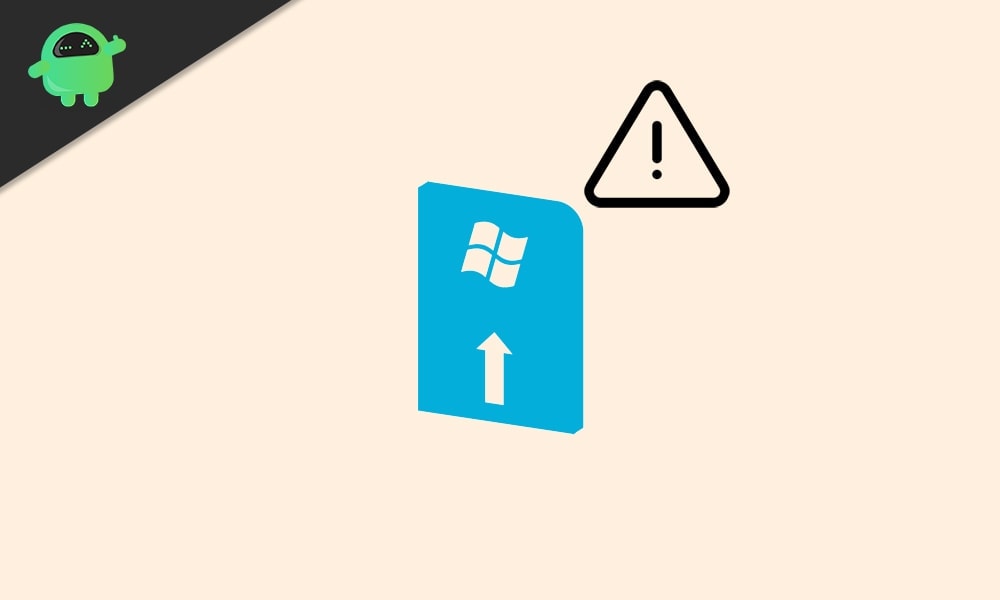
Page Contents
How to Fix Windows Update 0x80072EE6 Error Code?
Try the solutions mentioned below, one after the other, and surely one of them will sort out the issue for you. You should be able to install updates without any problems if you follow the steps accordingly.
Set the correct Date and Time:
When you are trying to perform an update, you are interacting with the Windows Server Update Service. And if you have an incorrect date and time set on your computer, the Windows Server will reject the connection. Windows Server is strict when it comes to identifying the systems that are trying to connect to the server for the update. If the time, date, or timezone is not set correctly, you will encounter the error code 0x80072EE6.
- Press Windows Key + R, and it will open up the Run dialog box.
- Enter “timedate.cpl” in the Run dialog box and click on Ok. The Date and Time window will open up.
- In the Date and Time window, go to the Date and Time tab and then click on “Change date and time.”
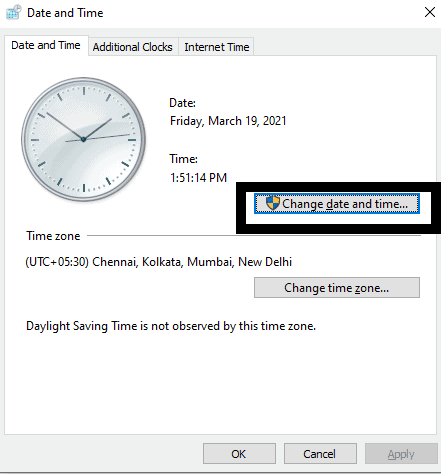
- You will see a UAC(User Account Control) pop-up asking for permission. Click on Yes.
- Set the correct date and time using the calendar and the digital clock, and then click on Ok.
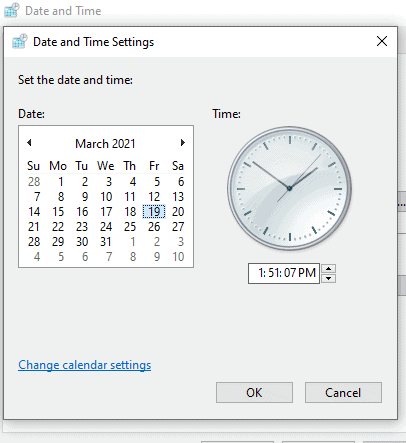
- Then click on Apply and restart your system.
Once you have ensured that the date and time are set correctly, try performing the update again. If you reencounter the error code 0x80072EE6, try the next solution.
Changing the URL on a particular Group policy setting:
If you encounter this error code every time you are trying to connect to the WSUS(Windows Server Update Service), the chances are that the location of the Microsoft Update Service location is not correctly set up in the Group Policy. There is a particular group policy setting called “Specify intranet Microsoft update service location.” If the URL under that policy is invalid, then you will definitely encounter the error code 0x80072EE6.
So let’s see how one can fix it.
- Press Windows Key + R, and it will open up the Run dialog box.
- Enter “gpedit.msc” in the Run dialog box and click on Ok.
- You will see a UAC(User Account Control) pop-up asking for permission. Click on Yes.
- The Local Group Policy Editor window will show up. Navigate to “Computer Configuration\Administrative Templates\Windows Components\Windows Update\” in the editor window.
- Inside the Windows Update policy folder, you will find the setting “Specify Intranet Microsoft Update Service” showing up on the right pane. Double-click on it.
- Make sure the toggle is set to “Enabled” here.
- Below under options, ensure that the address specified in the alternate download server starts with “HTTP://” or “HTTPS://.”
- If it directly starts with the web address, make the necessary change and add HTTP or HTTPS to its beginning.
- Click on Apply and then click on Ok.
Now, try performing the update again. If you reencounter the error code 0x80072EE6, try the next solution.
Re-register missing DLL dependency:
It is common to see this error on your screen while performing a Windows update if your system is missing the Microsoft XML Core Service file dependency (msxml3.dll). If that is the case with you, you can try using an elevated Command prompt to re-register the missing dependency. That will take care of any issues regarding missing DLL dependencies.
- Press Windows Key + R, and it will open up the Run dialog box.
- Enter “cmd.” in the Run dialog box and press Ctrl + Shift + Enter.
- You will see a UAC(User Account Control) pop-up asking for permission. Click on Yes to grant admin access.
- Enter the following command in the command prompt window and press the Enter key:
regsvr32 MSXML3.dl
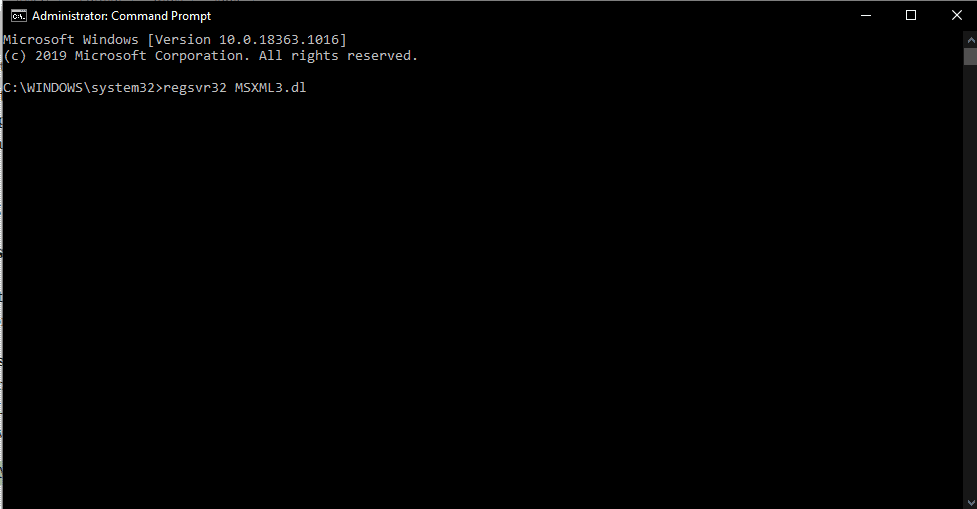
- Once it shows up in the command prompt window that the operation was successful, close the command prompt window and restart the system.
Now open up the Windows update section and perform the update again with which you were having troubles. If you see the error code 0x80072EE6 again, try the next solution.
Using System Restore Point:
If none of the solutions mentioned above worked for you, you need to think about whether you have recently performed any change in your system. Maybe you installed new driver files or installed a Windows update recently, after which you started seeing this error message. There is also a chance that if your computer was forcefully restarted due to an error, then that may have corrupted or affected some of the windows files required to connect to Windows Server Update Service. In that case, you need to restore your system completely to a previous point, a point when this error code was not showing up.
By default, the Windows system maintains several snapshots or points whenever the system changes. So you need to restore your system to a point when you were not having this issue at all.
- Click on the search near the start menu button and search for “Create a restore point.”
- Once it shows up in the results, open it up.
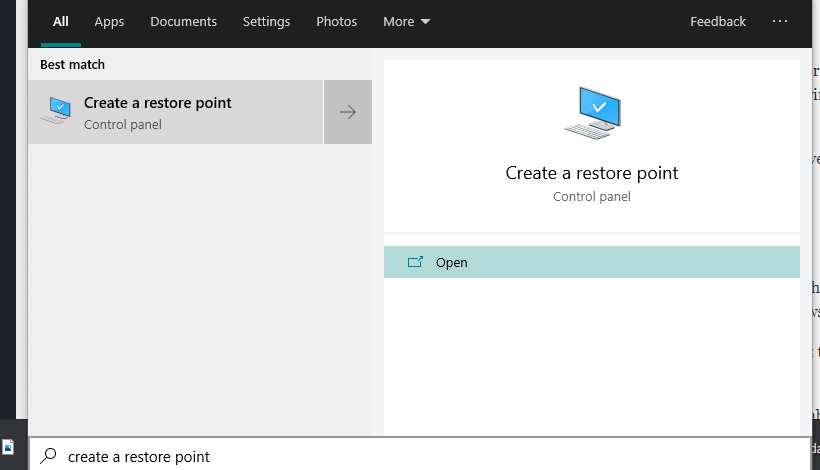
- In the system properties window, click on “System Restore.”
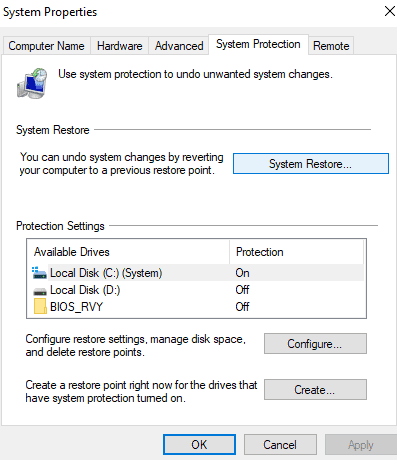
- The system restores setup wizard will show up. Click on Next, and you will see a list of restore points for your system.
- Click on a restore point with a date that takes your system back to a state when you were not encountering an error while trying to perform an update.
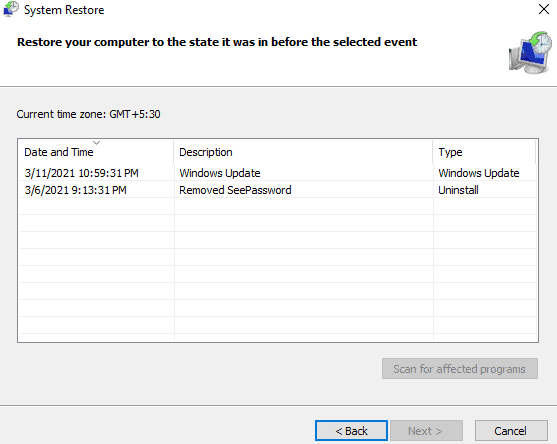
- Then click on Next and let the process complete.
Once the process is complete, your system will be restored to the way it was before. Any changes that you have made to your system after the restore point will be lost.
If even after using system restore, you still see the error code 0x80072EE6, try the next solution.
Repair Windows:
If everything else has failed, then you can be sure that the problem is definitely with your Windows files. In that case, you need to repair your Windows files. To do that, you will need an installation media device with the Windows files and perform a repair using that. After the repair is done, you will have all the Windows files restored, and all your personal files, installed applications, and games will remain intact.
You can even opt for a clean install which will surely take less time and even make your system snappier. But that would mean that you will lose everything that is saved and installed on your system. Go for a clean install only in an extreme scenario when the repairing of Windows does not bring any results.
This is all you can do to fix Windows Update 0x80072EE6 Error Code. If you have any questions or queries about this article, then comment down below, and we will get back to you. Also, be sure to check out our other articles on iPhone tips and tricks, Android tips and tricks, PC tips and tricks, and much more for more useful information.
